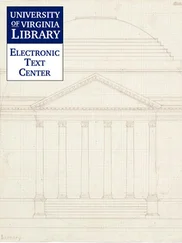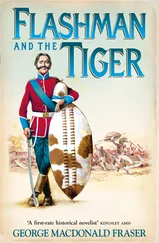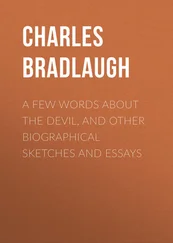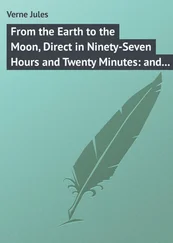Vince Houghton - Nuking the Moon - And Other Intelligence Schemes and Military Plots Left on the Drawing Board
Здесь есть возможность читать онлайн «Vince Houghton - Nuking the Moon - And Other Intelligence Schemes and Military Plots Left on the Drawing Board» весь текст электронной книги совершенно бесплатно (целиком полную версию без сокращений). В некоторых случаях можно слушать аудио, скачать через торрент в формате fb2 и присутствует краткое содержание. Город: New York, Год выпуска: 2019, ISBN: 2019, Издательство: Penguin Books, Жанр: История, Юмористические книги, на английском языке. Описание произведения, (предисловие) а так же отзывы посетителей доступны на портале библиотеки ЛибКат.
- Название:Nuking the Moon: And Other Intelligence Schemes and Military Plots Left on the Drawing Board
- Автор:
- Издательство:Penguin Books
- Жанр:
- Год:2019
- Город:New York
- ISBN:978-0-5255-0517-4
- Рейтинг книги:4 / 5. Голосов: 1
-
Избранное:Добавить в избранное
- Отзывы:
-
Ваша оценка:
- 80
- 1
- 2
- 3
- 4
- 5
Nuking the Moon: And Other Intelligence Schemes and Military Plots Left on the Drawing Board: краткое содержание, описание и аннотация
Предлагаем к чтению аннотацию, описание, краткое содержание или предисловие (зависит от того, что написал сам автор книги «Nuking the Moon: And Other Intelligence Schemes and Military Plots Left on the Drawing Board»). Если вы не нашли необходимую информацию о книге — напишите в комментариях, мы постараемся отыскать её.
Nuking the Moon: And Other Intelligence Schemes and Military Plots Left on the Drawing Board — читать онлайн бесплатно полную книгу (весь текст) целиком
Ниже представлен текст книги, разбитый по страницам. Система сохранения места последней прочитанной страницы, позволяет с удобством читать онлайн бесплатно книгу «Nuking the Moon: And Other Intelligence Schemes and Military Plots Left on the Drawing Board», без необходимости каждый раз заново искать на чём Вы остановились. Поставьте закладку, и сможете в любой момент перейти на страницу, на которой закончили чтение.
Интервал:
Закладка:
And they shall beat their swords into plowshares, and their spears into pruning hooks; nation shall not lift up sword against nation, neither shall they learn war any more.
I suppose we should be happy it wasn’t called the “Pruning Hooks Program.”
Peaceful industrial applications for nuclear weapons were thought to fall into two broad categories: (1) large-scale excavation and quarrying (blowing up and/or moving massive quantities of rock to make things like canals, harbors, highways, and railroad passages through mountains, dams, and so on), or (2) underground engineering (blowing up nukes underground to see what comes loose. Some applications might be stimulation of natural gas production, creation of natural gas and petroleum storage areas, and more). The program ran from 1958 to 1975, and during this time the United States conducted twenty-seven total Plowshare nuclear tests. The first test, Gnome, was conducted in an underground salt bed near Carlsbad, New Mexico. The last, 1973’s Rio Blanco, was part of a joint government/industry natural gas experiment held outside Rifle, Colorado. In between, twenty-three of the tests were held at the Nevada Test Site (NTS) sixty miles or so northwest of Vegas.
On top of the twenty-seven executed Plowshare tests, there were a number of proposed projects that were never carried out, and a relatively equal number of ideas that never even made it beyond the conceptual phase. For every Sulky, Templar, Vulcan, Gasbuggy, Cabriolet, Schooner, and Flask-Green (all executed Plowshare tests), there was a Ditchdigger, Carryall, Dogsled, Ketch, Bronco, Thunderbird, and Aquarius. Some of these were extraordinarily ambitious. The Tennessee/Tombigee Waterway project would have excavated three miles of a cut through low hills, connected the Tennessee and Tombigee rivers, and dug a 250-mile-long canal. In 1962, the United States formally agreed to participate in a joint feasibility study with Australia to see if it made sense to use nuclear weapons to construct an entire harbor on the latter country’s northwest coast (it didn’t).
But the most interesting—and strangest—project proposed under the umbrella of the Plowshare Program was put forth for consideration by a meteorologist named Jack Reed. Reed began his career at the end of World War II working for what would become the U.S. Air Force. After the war, he served in the Philippines as a military meteorologist and studied the power of hurricanes (called “typhoons” since they were in the Pacific), riding through them on eight missions in a specially modified B-29 bomber. Later, he joined the Sandia National Laboratories, and was sent along with his colleagues to study the effects of atmospheric nuclear testing in the Pacific Ocean.
During the first-ever thermonuclear (or hydrogen bomb) test in 1952, code-named “Mike,” Reed had an idea. Mike had produced a mushroom cloud more than twenty miles high. That’s considerably higher than the top of a hurricane. What if a nuclear explosion like this one could disrupt the central engine of a hurricane? What if we could use a nuke to kill a storm? Or failing that, could we at least mess with it enough to make it less dangerous to the human population on land?
Reed did some calculations. This could work, he thought. To be sure, he knew that no matter how strong a nuclear blast might be, it could never completely blow apart a large hurricane. They’re just too big and too powerful. Such a direct approach was a nonstarter. Reed wasn’t delusional. He understood the physics of tropical storms as well as or better than anyone.
But what about an indirect approach?
Once Reed had his ducks in a proverbial row, he set out to convince the world. He presented his plan at two prestigious conferences—first at the 1959 symposium on the Plowshare Program, and then at an American Meteorological Society conference on tropical weather. First the nuke guys. Then the weather people.
Scientists were coming up with ways to do just about anything you could think of with nuclear weapons. Someone must think this idea makes sense. Right?
Reed’s paper, titled “Some Speculations on the Effects of Nuclear Explosions on Hurricanes,” provided two plans of action for hurricane mitigation, literally labeled “Plan A” and “Plan B.”
Plan A was the more modest proposal. It worked off what Reed called the “apparent correlation of storm symmetry with direction of motion and acceleration.” In English, this means that when storms are symmetrical around the eye, they are not only at their most powerful, but also tend to move east to west—that is, directly at the shoreline of the Caribbean or the eastern seaboard of the United States. When storms get closer to the shore, they begin to become asymmetrical, likely due to the cooler air from the land. This weakens the storm a bit, but it also curves it to the north and northeast.
Just think of all of the storm tracks you’ve seen over the years. Almost every single one of them tracks west, until it gets close to shore and takes a hard right turn. Hurricane Andrew hit Miami, and then proceeded to turn right to thump New Orleans. So did Katrina. Hurricane Sandy came right at the northern part of the mid-Atlantic region, and then worked its way northeast right up the coast.
Reed’s premise: If we can find a way to create asymmetry in the center of a hurricane, we might be able to weaken it a bit, and—far more important—we might be able to change its direction, so that it turns back into the open ocean before hitting populated areas on land.
Pretty cool. If it works.
So how do we create this asymmetry? Reed’s answer: a 20-megaton thermonuclear explosion. According to his calculations, a nuclear explosion of this size would, “for at least 15 minutes, greatly influence the horizontal circulation of a hurricane.” He continues, “If a burst were made on one side of a storm or two bursts on opposite sides of a storm, considerable asymmetry in circulation could result.”
All we need is one 20-megaton bomb. Or maybe two. Forty megatons, tops. Seems a lot more rational than putting up hurricane shutters and buying bottled water…
Plan B was Reed’s masterpiece. It was based on what were, at the time, new discoveries about the temperature structure of a hurricane. In particular, scientists had discovered that at about twenty thousand feet above sea level, the eye of a hurricane is nearly ten degrees centigrade warmer than the surrounding storm. Reed’s idea was to take advantage of this thermal discrepancy. “It appears,” he wrote, “that a megaton explosion in the eye would engulf and entrain a large quantity of this hot ‘eye’ and carry it out of the storm into the stratosphere.” The removed air would rush out and be replaced by a “horizontal convergence of cooler air from the storm walls.” In other words, blow its heart out.
Reed wasn’t entirely sure about what kind (or kinds) of bombs would make the most sense. Big ones were a possibility, such as the 20-megaton bomb proposed in Plan A. But Reed also acknowledges that it might be “more economical to remove air with several smaller shots depending on the cost of devices.” It’s important when you are nuking natural disasters to remain economically responsible.
At worst, Reed argued, even if a storm couldn’t be eliminated entirely, it could be significantly weakened by the cooler air brought into the eye by the expulsion of the higher-temperature air. For example, a 150-knot hurricane could be reduced to about 120-knot maximum winds. This might not sound like a lot, but a 20 percent reduction in wind speeds could have a marked impact on the damage caused by the storm. Even more promising, Reed argued, would be the plan’s effect on less powerful storms. A hurricane with 100-knot winds could be reduced to 50. Fifty-knot winds are not even hurricane strength, so if you close one eye, turn your head a little to the left, squint with the other eye, and suspend disbelief, Jack Reed actually figured out a way to use nuclear weapons to eliminate a hurricane.
Читать дальшеИнтервал:
Закладка:
Похожие книги на «Nuking the Moon: And Other Intelligence Schemes and Military Plots Left on the Drawing Board»
Представляем Вашему вниманию похожие книги на «Nuking the Moon: And Other Intelligence Schemes and Military Plots Left on the Drawing Board» списком для выбора. Мы отобрали схожую по названию и смыслу литературу в надежде предоставить читателям больше вариантов отыскать новые, интересные, ещё непрочитанные произведения.
Обсуждение, отзывы о книге «Nuking the Moon: And Other Intelligence Schemes and Military Plots Left on the Drawing Board» и просто собственные мнения читателей. Оставьте ваши комментарии, напишите, что Вы думаете о произведении, его смысле или главных героях. Укажите что конкретно понравилось, а что нет, и почему Вы так считаете.











